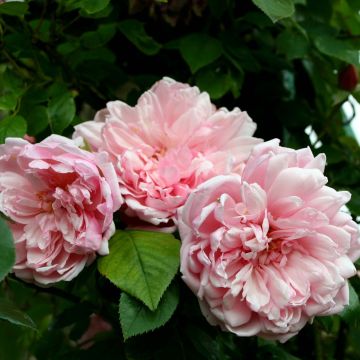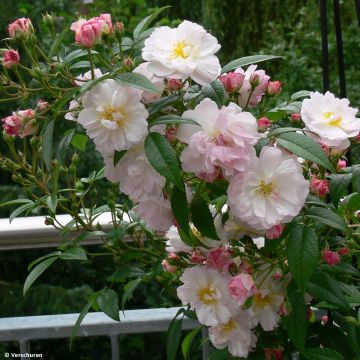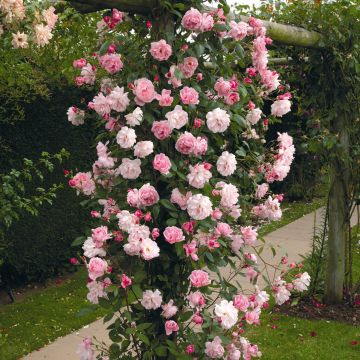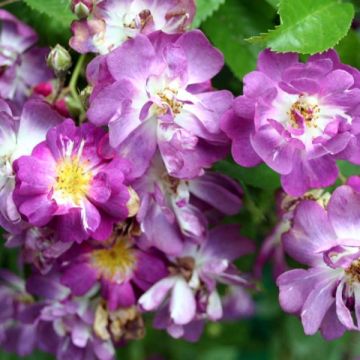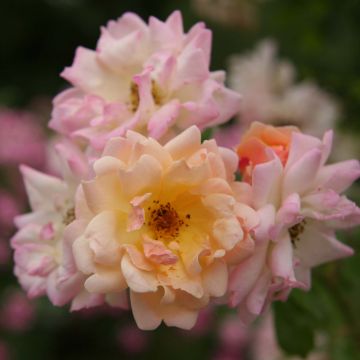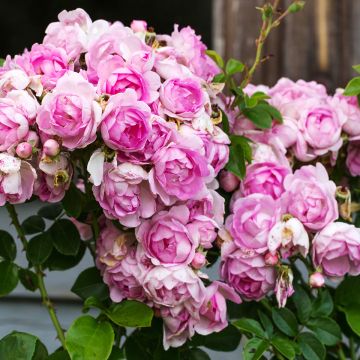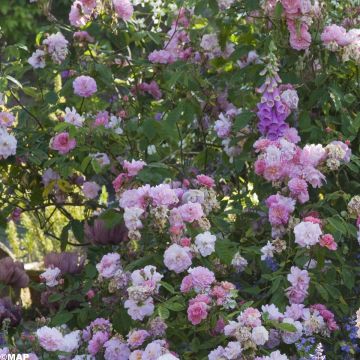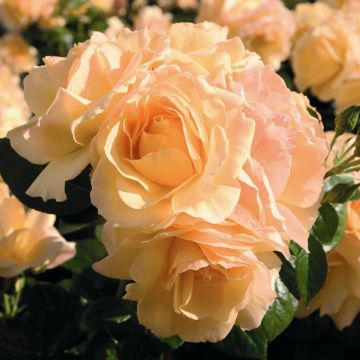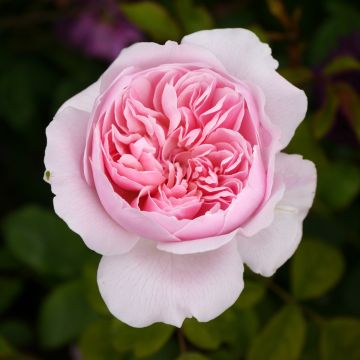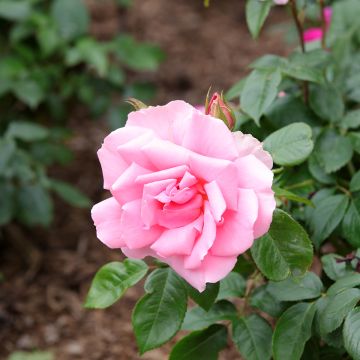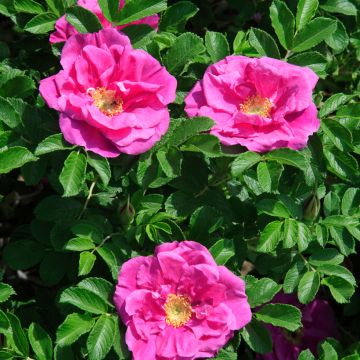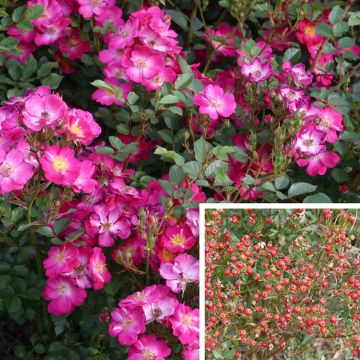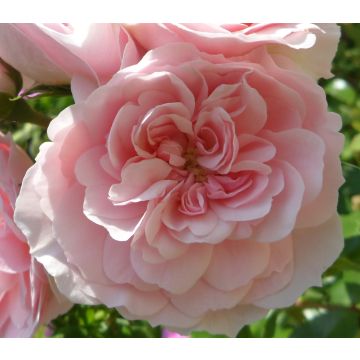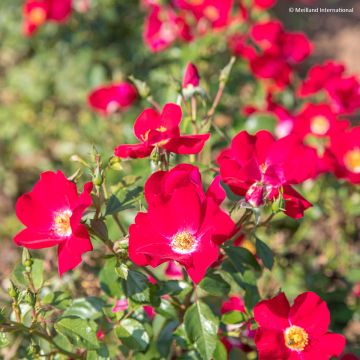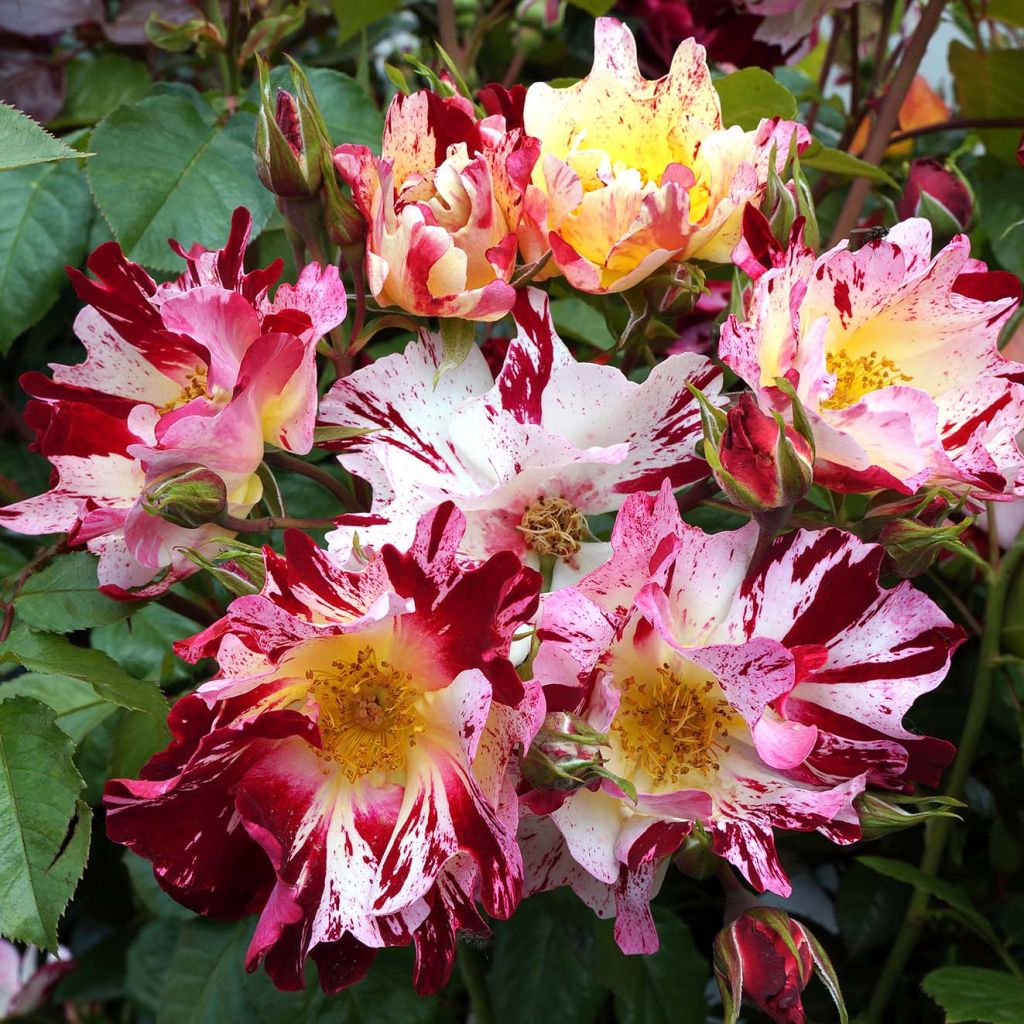

Rosa 'Hanabi' - Climbing Rose
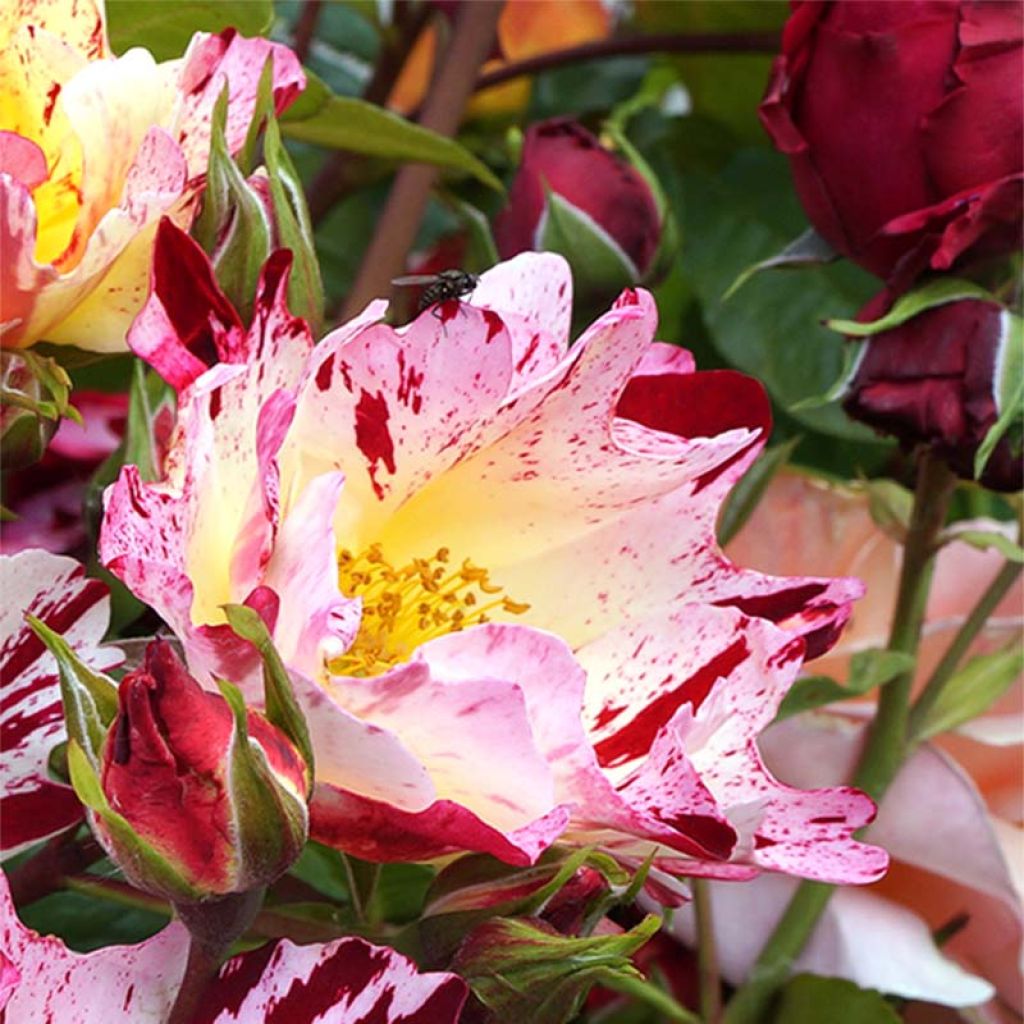

Rosa 'Hanabi' - Climbing Rose
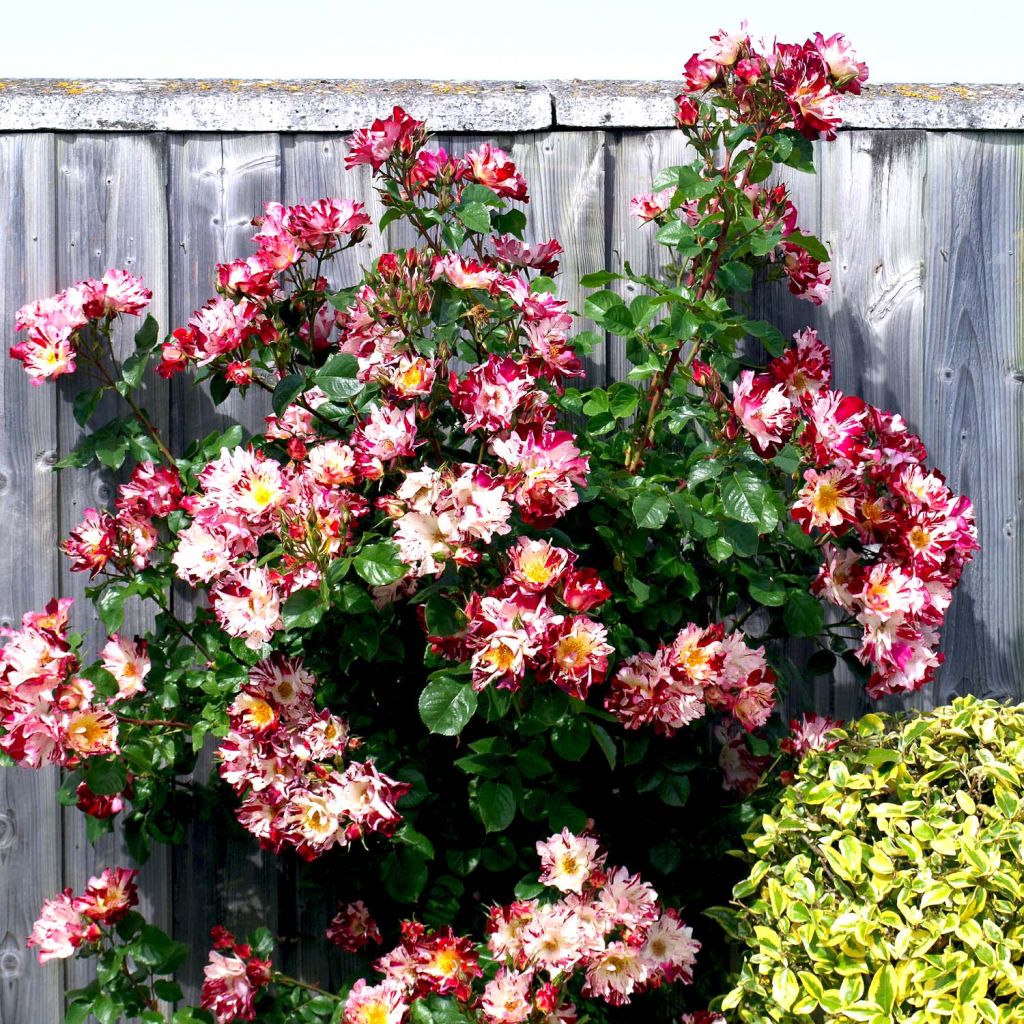

Rosa 'Hanabi' - Climbing Rose
Rosa 'Hanabi' - Climbing Rose
Rosa Hanabi® WEKroalt
WEKroalt
This plant carries a 24 months recovery warranty
More information
We guarantee the quality of our plants for a full growing cycle, and will replace at our expense any plant that fails to recover under normal climatic and planting conditions.
From €5.90 for pickup delivery and €6.90 for home delivery
Express home delivery from €8.90.
From €5.90 for pickup delivery and €6.90 for home delivery
Express home delivery from €8.90.
Delivery to Corse prohibited: UE law prohibits the import of this plant from mainland France to Corse as part of the fight against Xylella fastidiosa. Please accept our sincere apologies.
More information

Does this plant fit my garden?
Set up your Plantfit profile →
Description
The 'Hanabi' Climbing Rose is a charming original that doesn't go unnoticed in the garden. From summer to autumn, it offers the unusual and wonderfully colourful spectacle of its randomly splashed red and fuchsia pink flowers on a white background, a colour enhanced by the yellow glow that radiates from a large cluster of stamens. Simple to semi-double, they bloom in tight clusters, a true impressionist fireworks display against beautiful glossy foliage of deep green. As it tolerates severe pruning, this rose can also be trained as a bush. There are plenty of reasons to find a little spot for it in the garden!
The 'Hanabi' Climbing Rose or 'WEKroalt' belongs to the rose family. Its evocative name, Hanabi, means fireworks in Japanese. This relatively recent American creation (1999) is the result of hybridisation between two very dissimilar roses: 'Minnie Mouse', a miniature climbing rose with variegated red and white flowers, and 'Altissimo', a vigorous climbing rose from Delbard producing large red blossoms. It has won over 80 medals in international competitions. It is a small climbing rose with good vigour. It has a flexible habit and thorny stems, often reaching 2.5 metres (8 feet) in height and 1 to 1.25 metres (3 to 4 feet) in width when trained. Regular pruning can easily be kept in more modest proportions, forming a beautiful bush about 1.5 metres (5 feet) in all directions. Its dark green glossy foliage is not very susceptible to diseases and perfectly highlights the strongly variegated hue of the different flowers. It blooms from June to October, abundantly if it doesn't lack water. Its 8 to 10 cm (3 to 4in) flowers, grouped in clusters, are composed of 5 to 10 undulated petals arranged informally, single to semi-double, centred around a golden yellow heart populated with prominent stamens of the same tone. They are not fragrant.
This 'Hanabi' rose allows for sumptuous decorations throughout the summer, requiring very little maintenance apart from regular watering in summer during periods of high heat and prolonged drought. Trained or grown as a bush, it pairs particularly well with pink or white flowers such as 'Iceberg', 'Pink Bells', 'Petit Bonheur', or 'Aimée Vibert'. As a structural element in English gardens, rose arches form beautiful shelters where one can rest while connecting different parts of the garden. Mix them or combine them with easy-to-grow large-flowered clematis like 'Madame Lecoultre', 'Montana Grandiflora', or 'Miss Bateman', whose white flowers temper the whimsical roses of Hanabi. They are good companions for phlox, delphiniums, foxgloves, catmints, and tall baby's breath.
Report an error about the product description
Rosa 'Hanabi' - Climbing Rose in pictures
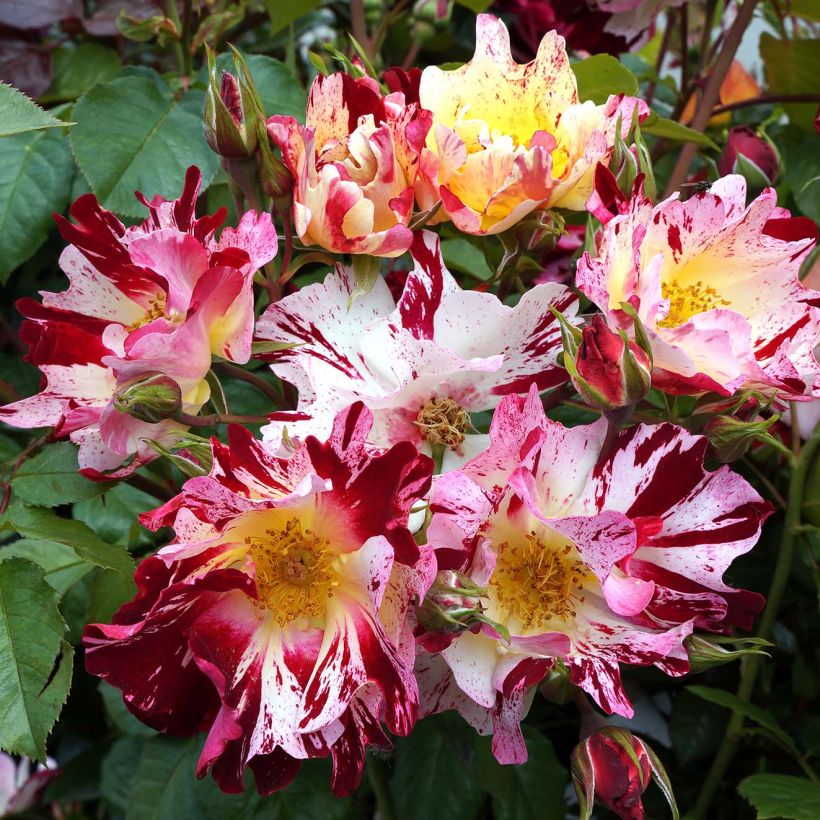

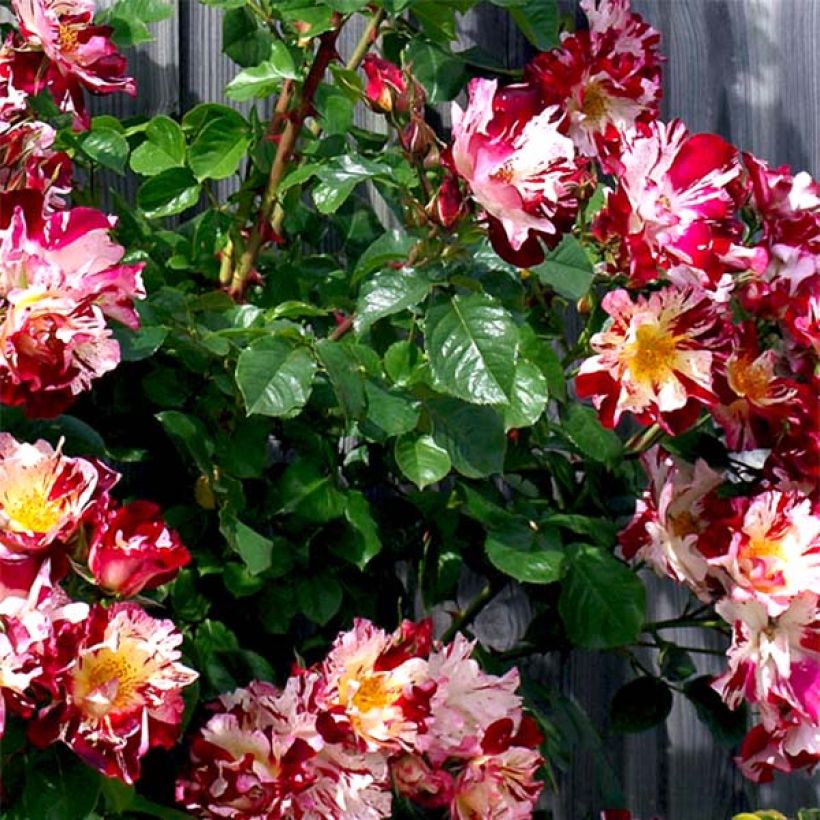

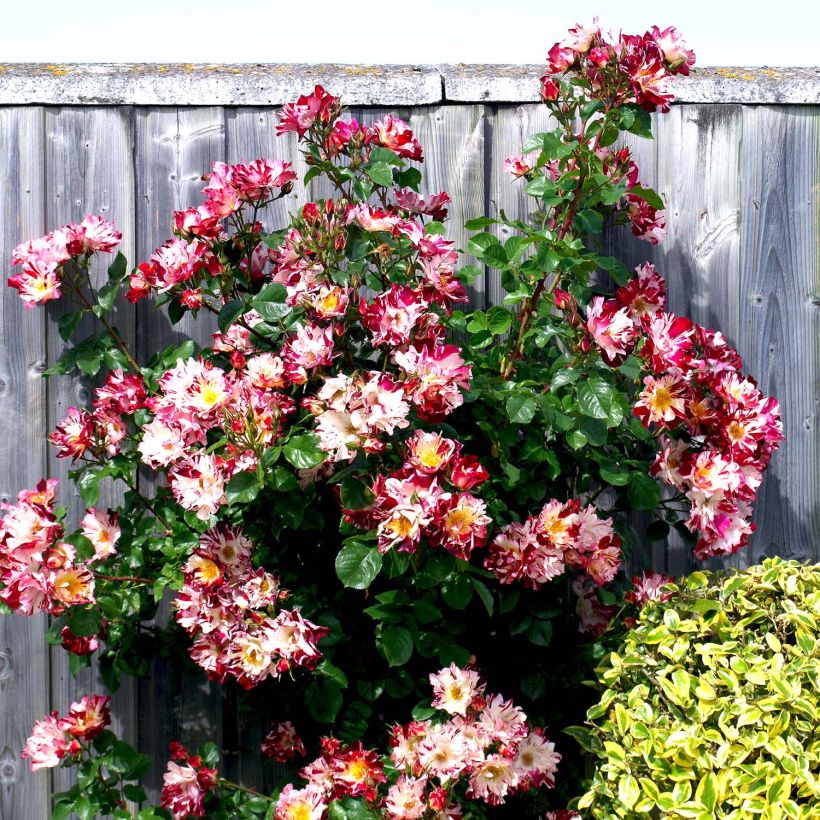

Plant habit
Flowering
Foliage
Botanical data
Rosa
Hanabi® WEKroalt
Rosaceae
WEKroalt
Cultivar or hybrid
Rosa canina Laxa (Wrapped bare root), Rosa multiflora (4L/5L pot)
Other Climbing Roses
Planting and care
To plant the 'Hanabi' rose, choose a spot with ordinary, well-drained soil between November and March. The rose prefers heavier clayey soils. Add compost or well-rotted manure to the planting hole if the soil is too sandy, compact, or dry. Avoid waterlogged soils in winter. Place the rose where it can receive ample sunshine and some shade. During the vegetation period and flowering, use a rose fertiliser for better growth. Remove faded flowers to encourage reblooming. Floribunda roses are vigorous and floriferous. In late winter, prune the stems back to about a quarter of their length (from 4 to 6 buds from the base of the stem) to promote bushy growth and prevent tangling in the centre of the branches.
Roses may develop unsightly spots at the end of summer, but this is a natural occurrence and doesn't harm the rose's growth.
Planting period
Intended location
Care
-
, onOrder confirmed
Reply from on Promesse de fleurs
Roses by purpose
Haven't found what you were looking for?
Hardiness is the lowest winter temperature a plant can endure without suffering serious damage or even dying. However, hardiness is affected by location (a sheltered area, such as a patio), protection (winter cover) and soil type (hardiness is improved by well-drained soil).

Photo Sharing Terms & Conditions
In order to encourage gardeners to interact and share their experiences, Promesse de fleurs offers various media enabling content to be uploaded onto its Site - in particular via the ‘Photo sharing’ module.
The User agrees to refrain from:
- Posting any content that is illegal, prejudicial, insulting, racist, inciteful to hatred, revisionist, contrary to public decency, that infringes on privacy or on the privacy rights of third parties, in particular the publicity rights of persons and goods, intellectual property rights, or the right to privacy.
- Submitting content on behalf of a third party;
- Impersonate the identity of a third party and/or publish any personal information about a third party;
In general, the User undertakes to refrain from any unethical behaviour.
All Content (in particular text, comments, files, images, photos, videos, creative works, etc.), which may be subject to property or intellectual property rights, image or other private rights, shall remain the property of the User, subject to the limited rights granted by the terms of the licence granted by Promesse de fleurs as stated below. Users are at liberty to publish or not to publish such Content on the Site, notably via the ‘Photo Sharing’ facility, and accept that this Content shall be made public and freely accessible, notably on the Internet.
Users further acknowledge, undertake to have ,and guarantee that they hold all necessary rights and permissions to publish such material on the Site, in particular with regard to the legislation in force pertaining to any privacy, property, intellectual property, image, or contractual rights, or rights of any other nature. By publishing such Content on the Site, Users acknowledge accepting full liability as publishers of the Content within the meaning of the law, and grant Promesse de fleurs, free of charge, an inclusive, worldwide licence for the said Content for the entire duration of its publication, including all reproduction, representation, up/downloading, displaying, performing, transmission, and storage rights.
Users also grant permission for their name to be linked to the Content and accept that this link may not always be made available.
By engaging in posting material, Users consent to their Content becoming automatically accessible on the Internet, in particular on other sites and/or blogs and/or web pages of the Promesse de fleurs site, including in particular social pages and the Promesse de fleurs catalogue.
Users may secure the removal of entrusted content free of charge by issuing a simple request via our contact form.
The flowering period indicated on our website applies to countries and regions located in USDA zone 8 (France, the United Kingdom, Ireland, the Netherlands, etc.)
It will vary according to where you live:
- In zones 9 to 10 (Italy, Spain, Greece, etc.), flowering will occur about 2 to 4 weeks earlier.
- In zones 6 to 7 (Germany, Poland, Slovenia, and lower mountainous regions), flowering will be delayed by 2 to 3 weeks.
- In zone 5 (Central Europe, Scandinavia), blooming will be delayed by 3 to 5 weeks.
In temperate climates, pruning of spring-flowering shrubs (forsythia, spireas, etc.) should be done just after flowering.
Pruning of summer-flowering shrubs (Indian Lilac, Perovskia, etc.) can be done in winter or spring.
In cold regions as well as with frost-sensitive plants, avoid pruning too early when severe frosts may still occur.
The planting period indicated on our website applies to countries and regions located in USDA zone 8 (France, United Kingdom, Ireland, Netherlands).
It will vary according to where you live:
- In Mediterranean zones (Marseille, Madrid, Milan, etc.), autumn and winter are the best planting periods.
- In continental zones (Strasbourg, Munich, Vienna, etc.), delay planting by 2 to 3 weeks in spring and bring it forward by 2 to 4 weeks in autumn.
- In mountainous regions (the Alps, Pyrenees, Carpathians, etc.), it is best to plant in late spring (May-June) or late summer (August-September).
The harvesting period indicated on our website applies to countries and regions in USDA zone 8 (France, England, Ireland, the Netherlands).
In colder areas (Scandinavia, Poland, Austria...) fruit and vegetable harvests are likely to be delayed by 3-4 weeks.
In warmer areas (Italy, Spain, Greece, etc.), harvesting will probably take place earlier, depending on weather conditions.
The sowing periods indicated on our website apply to countries and regions within USDA Zone 8 (France, UK, Ireland, Netherlands).
In colder areas (Scandinavia, Poland, Austria...), delay any outdoor sowing by 3-4 weeks, or sow under glass.
In warmer climes (Italy, Spain, Greece, etc.), bring outdoor sowing forward by a few weeks.


































